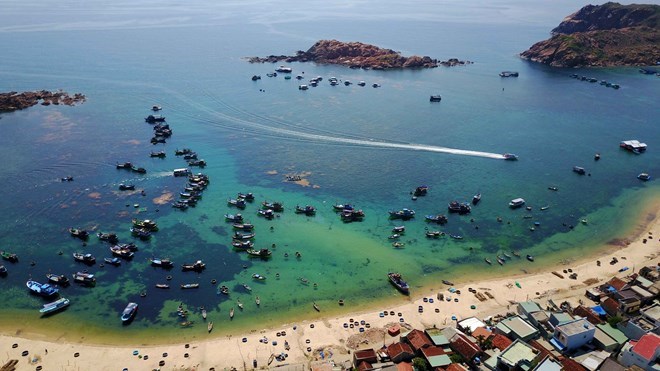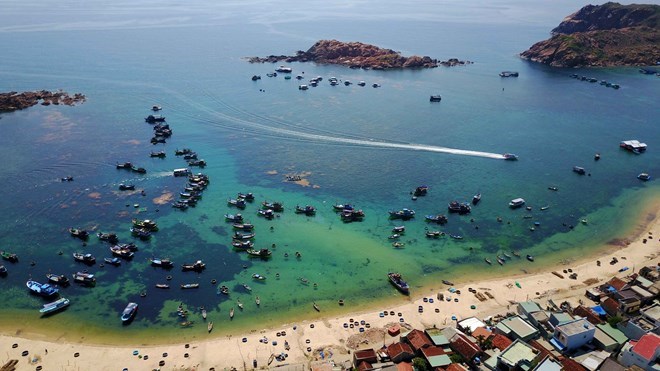



The sea off the coast of Quy Nhon city, Binh Dinh province (Photo:
VNA)
Dung said that in the first quarter of 2019, the south central province
welcomed 1.14 million visitors, up 16.1 percent over the same period in 2018,
including 96,000 foreigners.
Total earnings of the sector in the period reached 981.7 billion VND, up 20.6
percent year on year, he noted.
This year, the locality will hold the seventh Vietnam Vovinam Festival 2019
from August 8-11, which is expected to attract more than 3,000 visitors. A
marathon held by online newspaper VnExpress will take place in June, while a
national boxing championship will be held in September.
Noting that the capacity of tourism sector of the province has yet to match
visitors’ demand, Dung said the province has designed various measures to
attract investment in tourism and encourage locals to engage in the field.
Alongside, the province has focused on expanding tourism infrastructure and
high quality accommodation, while improving the quality of tourism services and
products, he said.
Since 2016, the province has attracted nearly 18 trillion VND of investment in
tourism, while approving nine tourism projects, 15 resort projects and one
safari park.
Thr province has 236 hotels with 5,554 rooms and 49 travel firms. Many big
projects, including the five-star The Coastal Hill resort and villas, four-star
Maia Quy Nhon Beach, TMS Luxury Hotel & Residence Quy Nhon and FLC Sea
Tower are underway.
Local authorities have paid much attention to supervising tourism service
providers in the province to handle law violations, stated Dung.
Binh Dinh is rich in cultural and historical traditions and boasts many scenic
sites along its 134km-long coast. Notably, Quy Nhon city has diverse terrain
including plain land, hills, mountains, rivers, lakes, sea and islands. Along
with relic sites and beautiful natural landscapes, visitors to this city can
also explore traditional arts and festivals, craft villages, the Binh Dinh martial
art, as well as local food.
Dung underscored that it is not only beautiful landscapes that attract
visitors, but the cultural identity of the area and hospitality of locals.
Source: VNA